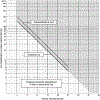Comparing N-acetylcysteine and 4-methylpyrazole as antidotes for acetaminophen overdose
- PMID: 34978586
- PMCID: PMC8837711
- DOI: 10.1007/s00204-021-03211-z
Comparing N-acetylcysteine and 4-methylpyrazole as antidotes for acetaminophen overdose
Abstract
Acetaminophen (APAP) overdose can cause hepatotoxicity and even liver failure. N-acetylcysteine (NAC) is still the only FDA-approved antidote against APAP overdose 40 years after its introduction. The standard oral or intravenous dosing regimen of NAC is highly effective for patients with moderate overdoses who present within 8 h of APAP ingestion. However, for late-presenting patients or after ingestion of very large overdoses, the efficacy of NAC is diminished. Thus, additional antidotes with an extended therapeutic window may be needed for these patients. Fomepizole (4-methylpyrazole), a clinically approved antidote against methanol and ethylene glycol poisoning, recently emerged as a promising candidate. In animal studies, fomepizole effectively prevented APAP-induced liver injury by inhibiting Cyp2E1 when treated early, and by inhibiting c-jun N-terminal kinase (JNK) and oxidant stress when treated after the metabolism phase. In addition, fomepizole treatment, unlike NAC, prevented APAP-induced kidney damage and promoted hepatic regeneration in mice. These mechanisms of protection (inhibition of Cyp2E1 and JNK) and an extended efficacy compared to NAC could be verified in primary human hepatocytes. Furthermore, the formation of oxidative metabolites was eliminated in healthy volunteers using the established treatment protocol for fomepizole in toxic alcohol and ethylene glycol poisoning. These mechanistic findings, together with the excellent safety profile after methanol and ethylene glycol poisoning and after an APAP overdose, suggest that fomepizole may be a promising antidote against APAP overdose that could be useful as adjunct treatment to NAC. Clinical trials to support this hypothesis are warranted.
Keywords: 4-Methylpyrazole; Acetaminophen; Fomepizole; Hepatotoxicity; N-Acetylcysteine; c-Jun N-terminal kinase.
© 2022. The Author(s), under exclusive licence to Springer-Verlag GmbH Germany, part of Springer Nature.
Figures


References
-
- Arzuk E, Turna B, Sözbilen M, Orhan H (2018) Inter-individual and inter-organ variability in the bioactivation of paracetamol by human liver and kidney tissues. Environ Toxicol Pharmacol 61:8–17. - PubMed
Publication types
MeSH terms
Substances
Grants and funding
LinkOut - more resources
Full Text Sources
Medical
Research Materials
Miscellaneous

